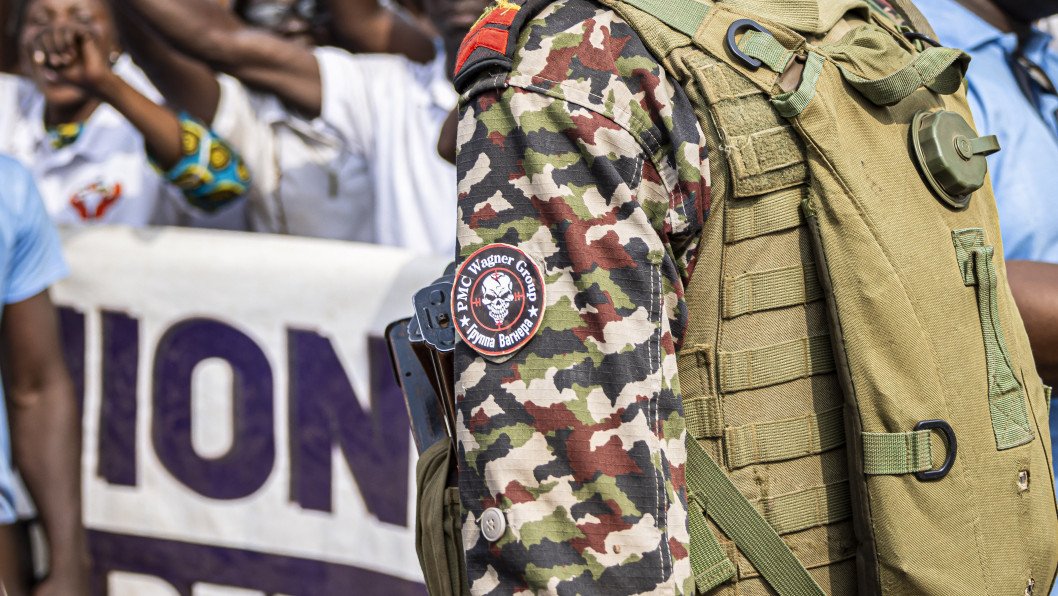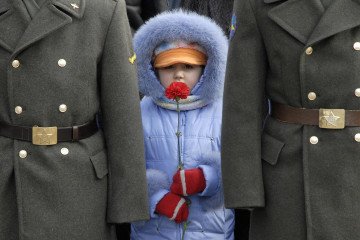- Category
- Latest news
Russia Deploys Troops, Drones, and Armor in Guinea. Why It Matters Now?

On May 9, a group of Russian troops participated in a Victory Day parade in Equatorial Guinea, marking the first official appearance of a Russian military presence in the Central African nation, following their deployment in the fall of 2024, Ukrainian defense outlet Defense Express reported on May 13.
The event also included personnel from the Equatoguinean armed forces.
According to defense analysis group Janes, the Russian contingent consisted of about 40 troops and included armored vehicles such as the BTR-82A and the Tigr infantry mobility vehicle, along with a truck-mounted ZU-23-2 anti-aircraft gun and two Toyota Hilux pickups.
In a bid to win over local audiences, Russian forces also showcased an FPV drone training simulator.

Back in November 2024, reports surfaced of at least 200 Russian “military instructors” arriving in Equatorial Guinea—likely members of the Wagner Group, Russia’s notorious paramilitary outfit. This week’s public appearance serves as the first direct confirmation of those earlier reports.
While 200 troops may not seem like a large deployment, it’s significant given the scale of Equatorial Guinea’s armed forces, which number fewer than 2,000 personnel in total.
Of those, just 1,100 serve in the army, which comprises one mechanized and three infantry battalions.
According to The Military Balance 2024, Equatorial Guinea’s ground forces are lightly equipped, with only three Soviet-era T-55 tanks, six BRDM-2 armored scouts, and 20 BMP-1 infantry fighting vehicles.

The country fields 41 armored personnel carriers of various types, including ten BTR-152s and six Chinese-made WZ-551s. It reportedly lacks conventional artillery and relies on Chinese HJ-8 anti-tank guided missiles and a limited number of ZU-23-2s and QW-2 man-portable air-defense systems.
The country’s small air force consists of around 100 personnel and includes a modest inventory: two Su-25s, two Su-25UBs, one An-32B, two An-72s, two L-39Cs, five Mi-24Ps, one Mi-17, one MiG-29, and one Ka-29 helicopter. Its navy, comprising 550 personnel, operates a Wele Nzas-class frigate, a Bata-class patrol frigate, and about ten other patrol boats and vessels.
Russia’s growing military footprint in Equatorial Guinea comes as Moscow seeks to extend its geopolitical influence in Africa—particularly in nations with weak institutions, small militaries, and strategic coastlines.

Earlier, reports emerged that the Kremlin was restoring a network of airbases in Libya to support Russian military operations across Africa, including activities involving the so-called “African Corps ” of the Russian Defense Ministry.
One of the key developments is the revival of a long-abandoned airbase near Matan al-Sarra, close to the Chadian border.
The base, unused since 2011, is now being refurbished to serve as a strategic hub for logistics, including refueling stops for military cargo planes en route to central Africa. This location also offers Russia a foothold to monitor migrant flows toward Europe and support operations in Sudan.




-924c3c302c27387e19f6c44aaeb98745.png)


